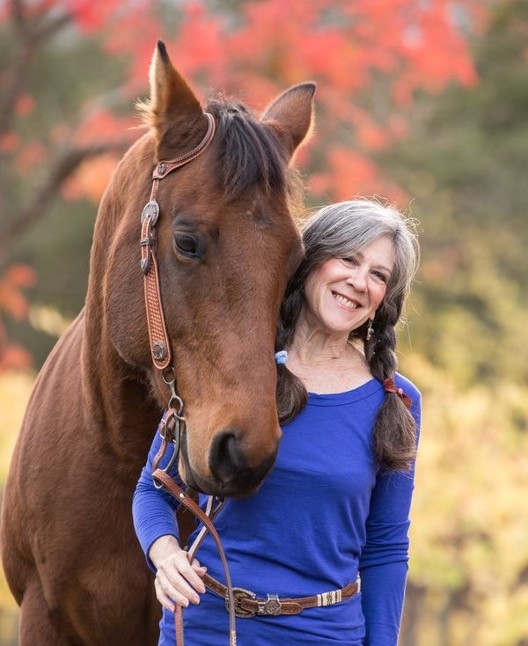How did you first become involved with the Red Cross?
Some decades ago, I actually started training to become a Red Cross volunteer. There was a woman in Sonoma who was working to build a strong volunteer team, and I was interested in joining. Unfortunately, she moved away and the effort never came to fruition—that was probably 25 years ago. But I reconnected with the Red Cross through preparedness events I produced around the region through my organization, the HALTER Project. I reached out to the Red Cross to support my home and ranch readiness events in the North Bay, and we began collaborating as partners and peers.
The HALTER Project is a big part of your story in disaster work and your connection to the Red Cross. Can you tell us more about it?
The HALTER Project is a privately funded program dedicated to providing free education, training, and resources to help people keep themselves and their animals ready for—and safer during—emergencies and natural disasters. I founded the HALTER Project 12 years ago to fill a need for locally relevant preparedness education and resources focused on keeping animals safe before and after disasters. I saw a gap in community-specific information—things like “How do I get alerts in my city?”—especially when it comes to animals and their care.
What part of the Red Cross mission are you most passionate about, and why?
Do I have to pick just one? What I really love about the Red Cross is how it excels in both disaster response and preparedness, which aligns beautifully with the HALTER Project’s mission. The Red Cross shines in “blue sky” preparedness—getting ready before disasters strike—and also in adapting to evolving needs during emergencies. It’s always ready to respond to whatever arises.
What inspired you to support the Red Cross initially, and what keeps you giving?
I’d say it’s the strength and sustainability of the Red Cross. It’s been around a long time, and that longevity matters to me. The organization can weather crises and remain strong and mobilized, even amid economic fluctuations—local, regional, or global. It transcends politics and focuses on developing and strengthening community-based resources. The speed and scope of its response efforts are also key reasons I continue to support it.
Why did you join the Tiffany Circle, and what’s your favorite thing about being on the North Bay Chapter Board?
Well, I like charm bracelets! But seriously, I wanted to be engaged beyond deployment and community education. Joining the Tiffany Circle connected me with other like-minded people in philanthropy—a world I don’t usually interact with at the outreach level. It’s also given me the opportunity to help donors become better prepared to protect themselves and their animals during emergencies. There’s often a mindset of “this doesn’t apply to me”—but it does! Being part of this community allows me to expand preparedness education, especially for animals, and build meaningful connections in the philanthropic space.
What words of wisdom would you share with someone considering involvement with the Red Cross?
BE READY FOR ACRONYMS! I absolutely encourage people to get involved at any level. Don’t be intimidated by the incredible dedication and experience of Red Cross volunteers—because without donors, those volunteers wouldn’t be able to do what they do. Philanthropy is the keystone of every preparedness and response effort. It takes a village of donors to support these efforts. Without a philanthropic community, none of this could happen.
I also believe in walking the walk. For me, transitioning from field response to a different kind of involvement with the Red Cross has allowed me to keep skin in the game. There comes a time when we step away from certain activities, but we still want to stay connected, expand our reach, and engage with new circles of people.
What is a personal or professional accomplishment you’re most proud of?
Growing the HALTER Project from a small grassroots effort into a program with national and international reach.
Besides your work with the HALTER Project and leadership with the Red Cross, what do you most enjoy doing?
Being outdoors in nature and enjoying the beautiful places we live. Spending time with animals.




